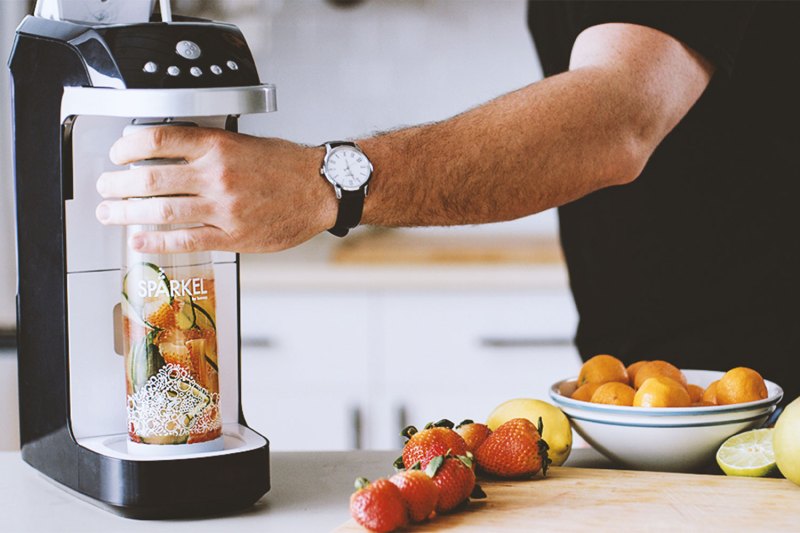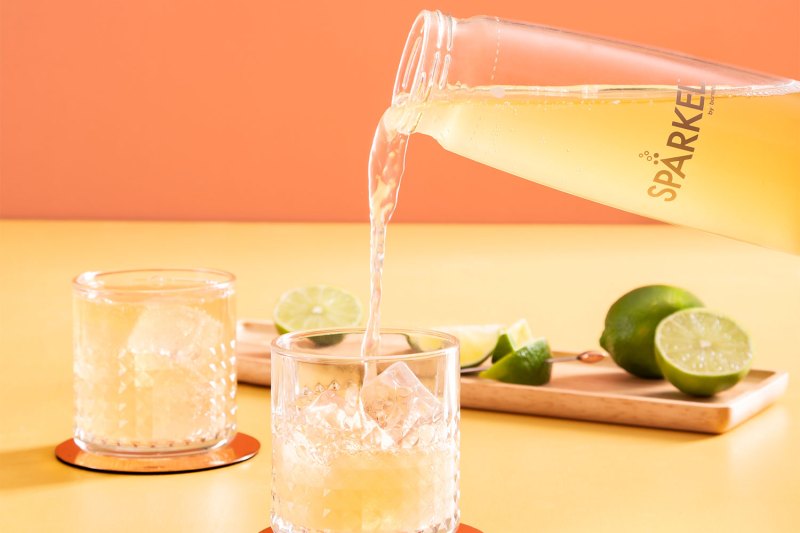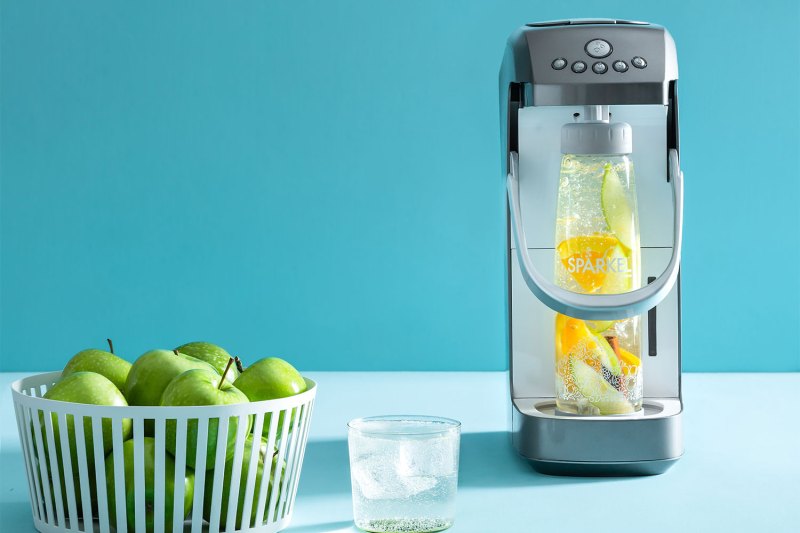For quite a while now, there has really been only one at-home water carbonator on the block. While there are other companies and brands out there, SodaStream is as synonymous with its product as Kleenex is with tissues or Jell-O is to gelatin desserts (or shots, whichever). Now, though, a new product has come out that is looking to give SodaStream a run for its money.

Spärkel is a carbonator-cum-ingredient-infuser that does what a SodaStream does, but in a slightly different way. If you’re not familiar with SodaStream, you basically take your bottle of water, and use carbon dioxide, delivered through a small tank, to carbonate it. Instead of using the CO2 tank, however, Spärkel carbonates water by using a packet of citric acid and sodium bicarbonate blended together to generate CO2 in the water.
To carbonate, you first pick one of five levels of carbonation (Spärkel delivers up to 80 PSI), then you put the packet’s contents into a sealed chamber with water (not the water you’ll be drinking). If you’re planning on infusing your water with anything – fruit, perhaps, and mint are both good options – you add the flavoring and cold filtered water to a specially designed (and dishwasher-safe) bottle. Next, you hold down the handle and the carbonation is infused through the bottom of the bottle into the water you’ll be drinking. The carbonation infuses the flavor and makes your water bubbly to your specifications in about 90 seconds. Once you’re done, you simply dispose of the leftover CO2 granule residue via an easily-removable tray. When you’re ready to make another bottle’s worth, simply add more of the mixture, more water, and you’re good to go.

The biggest difference, obviously – and the one that Spärkel hinges on — is the use of granule packets compared to a CO2 tank. Instead of dealing with replacement tanks (whether in person or online), Spärkel’s system reduces the amount of time spent getting new carbonation gear as well as the waste generated from the process (shipping and handling, gas to get to the store, et cetera). A standard Spärkel system comes with 10 packs (one bottle per pack), but you can get 90 packs for $50 on the Spärkel site.
Another fun side to the Spärkel system – and one we enjoyed testing out – was that, unlike SodaStream, Spärkel encourages the carbonation of liquids such as wine. (We tried it with a rosé and with a Sauvignon Blanc, with solid results both times.) The brand says you can carbonate your spirits as well, but we’ll let you try that one yourself – fizzy whiskey did not and still does not sound good to us (adding soda is what we prefer).

The Spärkel Beverage System will run you $100 for the system, one bottle, and ten packets. It is currently sold out on the official site but can be found for other prices on Amazon and elsewhere.



